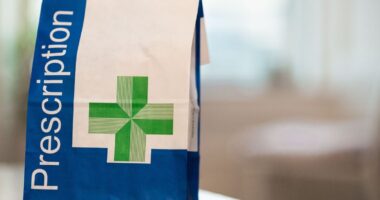People may know to avoid fast food or candy when trying to cut down on fats, sodium and sugars – but a new study suggests Americans are unknowingly consuming too much of these ingredients from unexpected foods.
Dietary guidelines recommend limiting fat and sugar to 10 percent of daily calories, but research found saturated fat constituted at least 12 percent of a day’s calories, and added sugar consumption ranged from 14 percent to 16 percent of calories.
A newly compiled list of foods and beverages by US researchers shows many common culprits – pizza, fries and ice cream.
But it also showed several more surprising sources of saturated fats and added sugars, such as chicken and salad dressing.
The stealthy foods, according to the researchers behind the latest study, could explain why the majority of Americans overdo it on sugars and fats, which greatly increases the risk of heart disease, stroke, diabetes and obesity.

Pizza, along with cheese and ice cream was among the top sources of saturated fats in people’s diets
Stealthy sugar and saturated fat sources muddy the waters for people trying to make healthy food choices and make it more difficult to follow a healthy diet.
Among the usual suspects, including desserts, pizza, and white bread, are some less obvious offenders, such as salad dressing, which is often loaded with added sugar and vegetable oils, and cured meat, which contains saturated fat.
Researchers from the University of Arizona, Georgetown University, the University of Southern California, Los Angeles and Ohio State University analyzed data from the National Health and Nutrition Examination Survey, which included more than 36,000 US adults between 2005 and 2018.
The researchers asked participants to recall everything they ate in the previous two days, and put the foods listed into 168 different categories.
Their findings were published in the journal Nutrients.
Fifty-four food categories made up 90 percent of saturated fat intake. The worst offenders included cheese, pizza and ice cream.
Eggs and omelets, burritos and tacos, and chicken were also top sources of saturated fat.
Saturated fat, found in foods like butter, cheese, red meat, cakes, bacon and fried foods, is believed to increase levels of cholesterol, a waxy substance, in the blood.
Over time, that substance can accumulate and build up along the walls of the arteries. High cholesterol has been linked to an increased risk of stroke and heart disease.
High saturated fat intake has long been thought of as a leading risk factor for heart attack and stroke, but emerging evidence is calling that widespread belief into question.

Five salad dressings with labels like ‘organic’ and ‘fat-free’ still had anywhere from eight to 12 grams of added sugars – more than a Krispy Kreme donut
Scientific reviews and meta-analyses over the past couple of years have found no link between saturated fat intake and overall death risk, heart disease risk and risk of death, stroke risk, or type 2 diabetes in adults.
Researchers for the British Journal of Sports Medicine added that to prevent heart disease, ‘there is no benefit from reduced fat, including saturated fat, on myocardial infarction, cardiovascular or all-cause mortality.’
Dr Christopher Taylor, a registered dietitian and professor at Ohio State University, said: ‘Chicken breast is promoted as a lower saturated fat food, but it still has a little bit of saturated fat.
‘But it is helpful to know how foods with smaller amounts also slowly add saturated fat in a stealthy way into the diet.’
When it comes to added sugars, 30 categories constituted 90 percent of intake, with soft drinks being the main sources.
Other top sources of added sugars included ketchup, sweetened tea, honey, pies, jams and juices.
The average American consumes about 68 grams, or 17 teaspoons, of sugar per day, which is roughly 300 percent of the recommended amount, which could be a contributor to the ballooning rates of obesity in the US.
Nearly half of American adults are classified as overweight or obese.
At the same time, added sugar consumption has been on the decline for about 20 years, according to the Sugar Association, a trade group for the sugar industry.
Dr Taylor added: ‘Being able to meet less than 10 percent is to identify the big contributors, but also to be able to see where saturated fat and added sugar may still exist in other food choices. It doesn’t make them poor choices – it’s about being aware of how the morning latte may be contributing.’
Added sugar is hard to avoid, according to Dr. Susan Schembre, an oncology professor at Georgetown and the study’s lead author.
‘It’s everywhere. It’s in so many unexpected foods and often in surprising amounts,’ she said.









